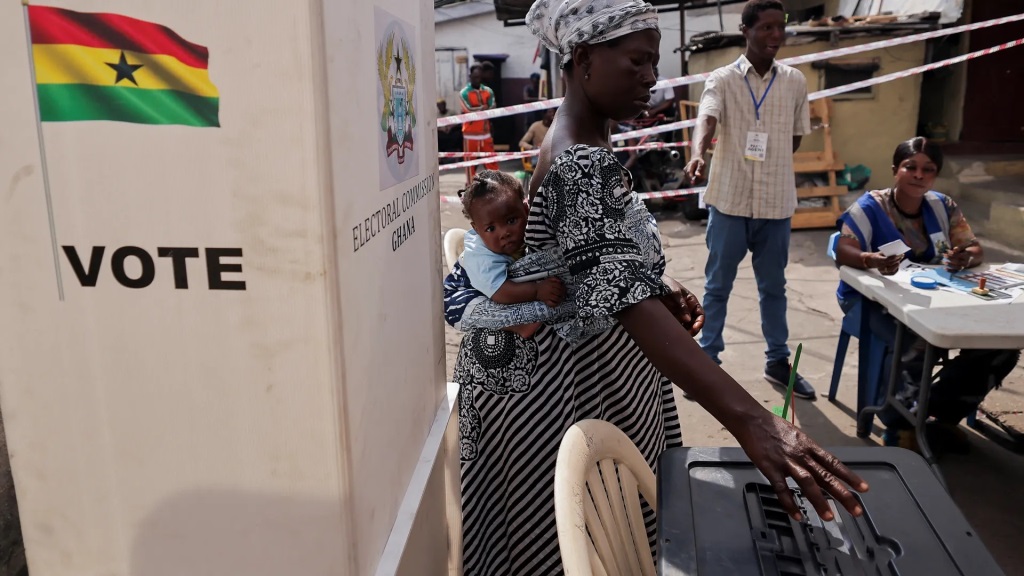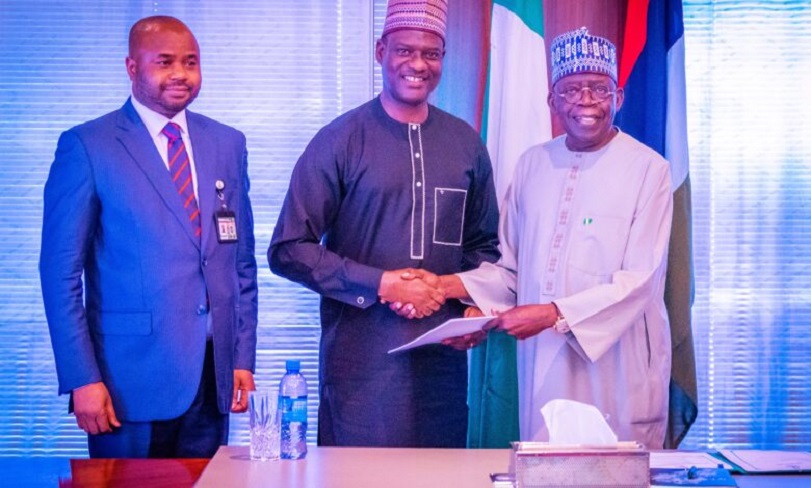Feature/OPED
AfCFTA and What it Means for e-Commerce

By Siyanda Makhubo
The current nature of international relations, which is marked by a surge in diverse (economic, political and socio-cultural) crises, demands the mobilisation of joint capacities of states and non-state actors (enterprises and individuals), to find a durable solution that would help to improve the living standard in African countries marks the founding reasons of the Africa Continental Free Trade Agreement (AfCFTA).
In line with agenda 2063 of the African Union (AU) which seeks to build the “Africa we want”, that is promoting intra-regional connectivity between capital cities by creating a single unified market, borders and air transportation network.
A conglomerate of varied states and industries will bring about a considerable shift in poverty alleviation, an influx in human movement via tourism, and a system that will work for women, thus promoting gender equality and women empowerment.
The AfCFTA is Africa’s blueprint and master plan for transforming Africa into the global powerhouse of the future. But what does that really mean for Africans and businesses most especially e-commerce like Jumia?
Prior to this initiative and till yet, Africa counts over fourteen economic blocs with eight recognized regional communities by the African Union. These include but are not limited to: the East African Community (EAC), Economic Community of West African States (ECOWAS), and; the Southern African Development Community (SADC) to name a few.
Many foreign to this concept will think that the AfCFTA will mean less safety for their country, borders and markets. However, the existence of these regional economic blocs may be seen by commentators as a hindrance to the development process of the African continent in its entirety on a continental level.
In reality, with these regional blocs, it is extremely difficult for sellers or enterprises of the East African Community (EAC) for instance in Kenya to easily trade with nations belonging to ECOWAS in Nigeria for instance. In reality, these regional blocs have different trading laws and agreements, using all different currencies with different levels of development and GNPs.
The priority of these economic blocs is to ensure continuous trade among its members, and promote diplomatic ties and security aspects among others. Nevertheless, this “security search” hinders the potential economic growth of the continent.
A perfect example is the case of e-commerce services. Under normal circumstances, e-commerce has delivery capacities of 24 hours to 3 business days on national territories where they operate depending on their operation sites and the land surface of the given country.
This means that one can expect their goods in a relatively short period of time for a much cheaper price compared to someone found in a neighbouring country and worst still one found in a different regional economic community.
Some challenges:
If Jumia, the leading e-commerce platform, for example, operates in Kenya and an online customer from Nigeria wishes to make transactions from their platform, they will generally receive their purchase after a relatively long period and with expensive constraints or maybe never (if there is no air connection) than if they were in Kenya.
This difference exists as a result of economic blockages put in place by regional economic communities. They include custom duties, tax, bureaucracy and just to cite a few. Since the cost of customs duties cannot be incurred by the producer, these costs are pushed down to the final consumer.
In nations where VAT (value-added tax) exists, consumers can see themselves purchasing a good for 1.7 times its original price. This is especially true for the 17 African States using the OHADA (Organization for the Harmonization of Business Law in Africa) accounting system. This generally has devastating effects on consumers who spend more in economies where they earn much less, and also on companies who find themselves shutting down due to lots of bureaucracy to follow and the high cost of existence in some regional blocs.
The Africa Regional Integration Index (ARII) in partnership with the African Union has a composite index that assesses how countries and regional economic communities are making progress towards their integration agendas based on sixteen indicators, grouped into five dimensions. The ARII also measures the state of regional integration of the continent as a whole with finality to make Africa more connected for businesses and persons.
The five dimensions are in respect to the free movement of people; infrastructure integration; macroeconomic integration; productive integration, and; trade integration. They are all pivotal for the success of e-commerce in Africa in particular and for development in general. Free movement means people will move faster and more efficiently thus promoting tourism and interculturalism.
Infrastructure integration means more route connectivity between countries (roads, railways and ports) and also fewer customs duties and bureaucracy. Macroeconomic integration takes into consideration the stabilization of economies, currencies and international conventions guiding the laws of trade. Productive integration supposes quality and quantity in terms of always equalizing demand and supply with respect to each country’s desires.
Lastly, trade integration means the elimination of taxes, embargoes, and the eventual increase in government subsidies to adapt to international trends and requirements.
Looking Ahead
Experts agree that regional integration expands markets and trade, enhances cooperation, mitigates risk, and fosters socio-cultural cooperation and regional stability.
Regional integration has also been shown to maximize the benefits of globalization while countering its negative effects and stimulating development in least-developed countries by improving productive capacity and encouraging investments in those pieces of infrastructure that hold the most economic potential.
This also means an opportunity for e-commerce to leverage profit margins and improve supply chain management on the continent. It is also an opportunity to foster African industries, making African produce more available and accessible to all.
Moving further, this continental agreement coupled with the internet penetration of the continent will exponentially propel e-commerce, as more Africans are beginning to cherish online shopping and home delivery services.
According to the UN International Telecommunication Union’s (ITU) study ‘Connecting Humanity’, this is a representative market of over 700 million persons connected to the internet. A joint African market will also make Africa the largest free continental free trade area of the world, with an investment of about $97 billion in internet infrastructure.
The case made is that Africa will be a thriving market for e-commerce as well as e-commerce companies that will have to make available the necessary infrastructure for business.
Historically, working for the establishment of a common sub-regional market zone was necessary for the encounter of people located in the same regions.
It was also important for the reinvention of social cohesion that was traditionally observed in cultural cohabitation, local or traditional rediscovery and peaceful coexistence in sub-regional parts of the continent. It is of pivotal necessity that states accelerate the implementation of the AfCFTA for a sustainable Africa, which is peaceful and which is economically viable and competitive in the international arena.
E-Commerce as a solution to integration:
The argument made is that the AfCFTA offers the solution for an integrated African market by way of trade through economic regions and countries. This inter-trading through such platforms fosters countries and economic regions to have common regulatory frameworks, policies and laws which will speak to a coherent African market.
It is also true that digitalisation and the AfCFTA will offer new and existing SMEs the opportunity to not only expand nationally but also throughout the continent beyond existing digital divides as a result of existing laws and regulations. Legislators in each country, therefore, have a responsibility to align with the AfCFTA so as to bridge these digital divides.
Siyanda Makhubo is the Group Public Relations and Communications Manager for Jumia since December 2021. He holds a Bachelor’s Degree in Economics, Law and Sociology, an Honours Degree in Marketing and Communications, a Post Graduate Diploma in Business Administration and is currently studying for an MBA with the University of the Witswatersrand.
He has more than seven years of professional experience in Communication, Risk and Reputation, Crisis Communication and PR Advocacy both in the Public and Private sectors. His interests lie in the subject of utilizing the PR and Communications system for social justice
Feature/OPED
The Future of Payments: Key Trends to Watch in 2025

By Luke Kyohere
The global payments landscape is undergoing a rapid transformation. New technologies coupled with the rising demand for seamless, secure, and efficient transactions has spurred on an exciting new era of innovation and growth. With 2025 fast approaching, here are important trends that will shape the future of payments:
1. The rise of real-time payments
Until recently, real-time payments have been used in Africa for cross-border mobile money payments, but less so for traditional payments. We are seeing companies like Mastercard investing in this area, as well as central banks in Africa putting focus on this.
2. Cashless payments will increase
In 2025, we will see the continued acceleration of cashless payments across Africa. B2B payments in particular will also increase. Digital payments began between individuals but are now becoming commonplace for larger corporate transactions.
3. Digital currency will hit mainstream
In the cryptocurrency space, we will see an increase in the use of stablecoins like United States Digital Currency (USDC) and Tether (USDT) which are linked to US dollars. These will come to replace traditional cryptocurrencies as their price point is more stable. This year, many countries will begin preparing for Central Bank Digital Currencies (CBDCs), government-backed digital currencies which use blockchain.
The increased uptake of digital currencies reflects the maturity of distributed ledger technology and improved API availability.
4. Increased government oversight
As adoption of digital currencies will increase, governments will also put more focus into monitoring these flows. In particular, this will centre on companies and banks rather than individuals. The goal of this will be to control and occasionally curb runaway foreign exchange (FX) rates.
5. Business leaders buy into AI technology
In 2025, we will see many business leaders buying into AI through respected providers relying on well-researched platforms and huge data sets. Most companies don’t have the budget to invest in their own research and development in AI, so many are now opting to ‘buy’ into the technology rather than ‘build’ it themselves. Moreover, many businesses are concerned about the risks associated with data ownership and accuracy so buying software is another way to avoid this risk.
6. Continued AI Adoption in Payments
In payments, the proliferation of AI will continue to improve user experience and increase security. To detect fraud, AI is used to track patterns and payment flows in real-time. If unusual activity is detected, the technology can be used to flag or even block payments which may be fraudulent.
When it comes to user experience, we will also see AI being used to improve the interface design of payment platforms. The technology will also increasingly be used for translation for international payment platforms.
7. Rise of Super Apps
To get more from their platforms, mobile network operators are building comprehensive service platforms, integrating multiple payment experiences into a single app. This reflects the shift of many users moving from text-based services to mobile apps. Rather than offering a single service, super apps are packing many other services into a single app. For example, apps which may have previously been used primarily for lending, now have options for saving and paying bills.
8. Business strategy shift
Recent major technological changes will force business leaders to focus on much shorter prediction and reaction cycles. Because the rate of change has been unprecedented in the past year, this will force decision-makers to adapt quickly, be decisive and nimble.
As the payments space evolves, businesses, banks, and governments must continually embrace innovation, collaboration, and prioritise customer needs. These efforts build a more inclusive, secure, and efficient payment system that supports local to global economic growth – enabling true financial inclusion across borders.
Luke Kyohere is the Group Chief Product and Innovation Officer at Onafriq
Feature/OPED
Ghana’s Democratic Triumph: A Call to Action for Nigeria’s 2027 Elections

In a heartfelt statement released today, the Conference of Nigeria Political Parties (CNPP) has extended its warmest congratulations to Ghana’s President-Elect, emphasizing the importance of learning from Ghana’s recent electoral success as Nigeria gears up for its 2027 general elections.
In a statement signed by its Deputy National Publicity Secretary, Comrade James Ezema, the CNPP highlighted the need for Nigeria to reclaim its status as a leader in democratic governance in Africa.
“The recent victory of Ghana’s President-Elect is a testament to the maturity and resilience of Ghana’s democracy,” the CNPP stated. “As we celebrate this achievement, we must reflect on the lessons that Nigeria can learn from our West African neighbour.”
The CNPP’s message underscored the significance of free, fair, and credible elections, a standard that Ghana has set and one that Nigeria has previously achieved under former President Goodluck Jonathan in 2015. “It is high time for Nigeria to reclaim its position as a beacon of democracy in Africa,” the CNPP asserted, calling for a renewed commitment to the electoral process.
Central to CNPP’s message is the insistence that “the will of the people must be supreme in Nigeria’s electoral processes.” The umbrella body of all registered political parties and political associations in Nigeria CNPP emphasized the necessity of an electoral system that genuinely reflects the wishes of the Nigerian populace. “We must strive to create an environment where elections are free from manipulation, violence, and intimidation,” the CNPP urged, calling on the Independent National Electoral Commission (INEC) to take decisive action to ensure the integrity of the electoral process.
The CNPP also expressed concern over premature declarations regarding the 2027 elections, stating, “It is disheartening to note that some individuals are already announcing that there is no vacancy in Aso Rock in 2027. This kind of statement not only undermines the democratic principles that our nation holds dear but also distracts from the pressing need for the current administration to earn the trust of the electorate.”
The CNPP viewed the upcoming elections as a pivotal moment for Nigeria. “The 2027 general elections present a unique opportunity for Nigeria to reclaim its position as a leader in democratic governance in Africa,” it remarked. The body called on all stakeholders — including the executive, legislature, judiciary, the Independent National Electoral Commission (INEC), and civil society organisations — to collaborate in ensuring that elections are transparent, credible, and reflective of the will of the Nigerian people.
As the most populous African country prepares for the 2027 elections, the CNPP urged all Nigerians to remain vigilant and committed to democratic principles. “We must work together to ensure that our elections are free from violence, intimidation, and manipulation,” the statement stated, reaffirming the CNPP’s commitment to promoting a peaceful and credible electoral process.
In conclusion, the CNPP congratulated the President-Elect of Ghana and the Ghanaian people on their remarkable achievements.
“We look forward to learning from their experience and working together to strengthen democracy in our region,” the CNPP concluded.
Feature/OPED
The Need to Promote Equality, Equity and Fairness in Nigeria’s Proposed Tax Reforms

By Kenechukwu Aguolu
The proposed tax reform, involving four tax bills introduced by the Federal Government, has received significant criticism. Notably, it was rejected by the Governors’ Forum but was still forwarded to the National Assembly. Unlike the various bold economic decisions made by this government, concessions will likely need to be made on these tax reforms, which involve legislative amendments and therefore cannot be imposed by the executive. This article highlights the purposes of taxation, the qualities of a good tax system, and some of the implications of the proposed tax reforms.
One of the major purposes of taxation is to generate revenue for the government to finance its activities. A good tax system should raise sufficient revenue for the government to fund its operations, and support economic and infrastructural development. For any country to achieve meaningful progress, its tax-to-GDP ratio should be at least 15%. Currently, Nigeria’s tax-to-GDP ratio is less than 11%. The proposed tax reforms aim to increase this ratio to 18% within the next three years.
A good tax system should also promote income redistribution and equality by implementing progressive tax policies. In line with this, the proposed tax reforms favour low-income earners. For example, individuals earning less than one million naira annually are exempted from personal income tax. Additionally, essential goods and services such as food, accommodation, and transportation, which constitute a significant portion of household consumption for low- and middle-income groups, are to be exempted from VAT.
In addition to equality, a good tax system should ensure equity and fairness, a key area of contention surrounding the proposed reforms. If implemented, the amendments to the Value Added Tax could lead to a significant reduction in the federal allocation for some states; impairing their ability to finance government operations and development projects. The VAT amendments should be holistically revisited to promote fairness and national unity.
The establishment of a single agency to collect government taxes, the Nigeria Revenue Service, could reduce loopholes that have previously resulted in revenue losses, provided proper controls are put in place. It is logically easier to monitor revenue collection by one agency than by multiple agencies. However, this is not a magical solution. With automation, revenue collection can be seamless whether it is managed by one agency or several, as long as monitoring and accountability measures are implemented effectively.
The proposed tax reforms by the Federal Government are well-intentioned. However, all concerns raised by Nigerians should be looked into, and concessions should be made where necessary. Policies are more effective when they are adapted to suit the unique characteristics of a nation, rather than adopted wholesale. A good tax system should aim to raise sufficient revenue, ensure equitable income distribution, and promote equality, equity, and fairness.
-

 Feature/OPED5 years ago
Feature/OPED5 years agoDavos was Different this year
-
Travel/Tourism8 years ago
Lagos Seals Western Lodge Hotel In Ikorodu
-

 Showbiz2 years ago
Showbiz2 years agoEstranged Lover Releases Videos of Empress Njamah Bathing
-

 Banking6 years ago
Banking6 years agoSort Codes of GTBank Branches in Nigeria
-

 Economy2 years ago
Economy2 years agoSubsidy Removal: CNG at N130 Per Litre Cheaper Than Petrol—IPMAN
-

 Banking2 years ago
Banking2 years agoFirst Bank Announces Planned Downtime
-

 Sports2 years ago
Sports2 years agoHighest Paid Nigerian Footballer – How Much Do Nigerian Footballers Earn
-

 Technology4 years ago
Technology4 years agoHow To Link Your MTN, Airtel, Glo, 9mobile Lines to NIN























